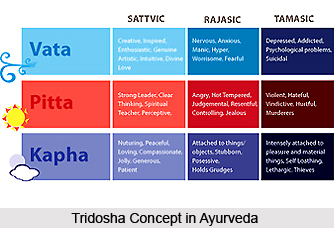 Ayurveda is the knowledge of life that deals in detail with conditions favourable to life, and factors contributing to the happiness, or responsible for the misery or sorrow of human beings. Ayurveda also suggests measures for a healthy living and a long life. It is the most ancient form of Indian medicine, whose origin can be traced to more than 5000 years.
Ayurveda is the knowledge of life that deals in detail with conditions favourable to life, and factors contributing to the happiness, or responsible for the misery or sorrow of human beings. Ayurveda also suggests measures for a healthy living and a long life. It is the most ancient form of Indian medicine, whose origin can be traced to more than 5000 years.The physiology of Ayurveda is based on the panchmahabhoota philosophy. This philosophy holds that every living being belonging to either the plant or the animal kingdom is made up of a living material, which has five fundamental components. Thus every living thing is an exclusive creation effected through these five basic elements- Earth (Prithvi), Water (aap), Divine Fire (tej), Air (vayu) and Universal Space (aakash). These five basic elements are known as the panchmahabhoota. These panchmahabhootas cumulatively lead to the formation of Tridoshas (tree = three, doshas = basic components or organizations), which constitute our body. The basics of the physiology of Ayurved can be found in a few ancient texts, the chiefest of which is the Charaka Samhita.
The tridosha concept in the physiology of Ayurved has been linked to the fundamental Buddhist notion of the three poisons. This view holds that, the human being exists because of the influence exerted on the uniform and undisturbed universal spirit, as it moves through the world, by the three disrupting forces: attraction (desire), aversion (hatred), and confusion (conception and misconception ). It is the eventual task of a human being to break free from these influences (poisons) and attain the ultimate objective of pure undifferentiated consciousness (nirvana). Although not visible, the doshas are an integral part of the human body and hence are studied in great details under the scope of the physiology of Ayurveda.
For more visit the link below:
https://www.indianetzone.com/5/physiology_ayurved.htm
https://www.indianetzone.com/5/physiology_ayurved.htm